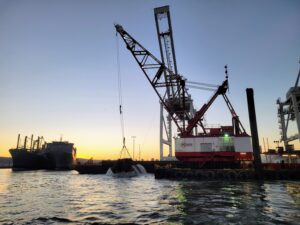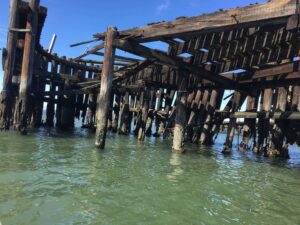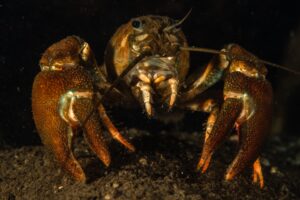It’s been just over a year since the devastating earthquake and tsunami wiped away coastal towns in Japan. As communities rebuild and mourn the loss of loved ones, a portion of the 25 million tons of wreckage is now swirling around the ocean and making its way to California shores.
It’s a unique research opportunity for scientists who have never before seen such a sudden, massive deposit of ocean debris from a one-time event.
“Over the years we’ve been tracking where debris collects. A clearer picture will eventually appear,” said Mary Jane Schramm, Outreach Specialist at the Gulf of the Farallones, a division of NOAA.
Researchers are tracking the debris as it’s carried by currents in hopes they will improve their models on the way ocean debris moves and where it ultimately settles. Every year an average of 14 million tons of garbage make it into the world’s oceans, swept along by gyres and finding its way to coastlines where marine animals consume it or become entangled — often with deadly effect.
Looking at the center
Several models predict that if the tsunami debris collects anywhere, in about three years’ time that place will likely be near the center of the Pacific Ocean at what’s been termed the Great Pacific Garbage Patch. University of Hawaii, Manoa researchers are concentrating their search for tsunami debris on the western coastline of the island of Midway, an atoll in the middle of the Pacific garbage patch.
“The problem is going to be knowing which pieces come from Japan and which didn’t,” said John Largier, a University of California, Davis oceanographer.
Scientists are using small electronic transmitters, called trackers, to follow the tsunami debris. They have also enlisted the help of the shipping industry to report patches. Early reports show that much of it is breaking up and sinking to the ocean floor. Some of it is also expected to reach the West Coast of the Americas this fall or winter, a full 18 months after the disaster struck Japan. An unmanned Japanese fishing trawler was recently discovered off the coast of British Columbia, a ghostly reminder of the tragedy.
Some news stations have reported that “huge amounts of debris are bound for the California coastline.” But scientists say don’t expect a deluge of trash. And despite the nuclear meltdown in Japan, radioactivity will not be on its way, since the meltdown occurred after the tsunami washed the debris to sea. As the debris moves, it’s dissipating throughout the ocean like a scatter-plot.
“People have in their minds that it’s going to be this big tsunami, but that’s just not true,” said Carey Morishige, Pacific Islands regional coordinator for NOAA.
A slight spike?
By the time the currents carry the tsunami debris to California shores, residents can expect anything from a slight spike in loose detritus along the shores to nothing terribly out of the ordinary. If it collects anywhere in the Bay Area, those places are likely certain high-deposition beaches, such as China Beach in San Francisco and Muir Beach in West Marin, where currents flowing around the Golden Gate bring trash to shore.
“Certain beaches are depositional by the way the waves break on them, bringing debris,” said Largier. ”In this region, the onshore winter winds tend to push things onshore quite effectively. After a winter storm, the winds blow directly on shore.”
Gulf of Farallones scientists are paying close attention to the Humboldt Current as it runs along the West Coast. This current is one of the world’s most productive, and in the winter, it shifts to a counter-current. This shift in the ocean’s current is just one of the many factors that make predicting where and when the debris appear so difficult.
A full ocean cleanup of the tsunami debris is out of the question. The best that can come of it is a better understanding of where it’s going and the environmental damage it may be causing. It’s even possible that a more accurate picture might bolster efforts to address the bigger issue of ocean garbage.
In tracking tsunami debris, Schramm said the public can also help.
“Volunteers have been given specific reporting [instructions],” she said. “If they happen to notice a sharp increase, or you know, something with Japanese writing on it, they can report it.”
NOAA is asking the public to report any unusual debris that may be linked to the Japanese tsunami to: disasterdebris@noaa.gov.

.jpg)




